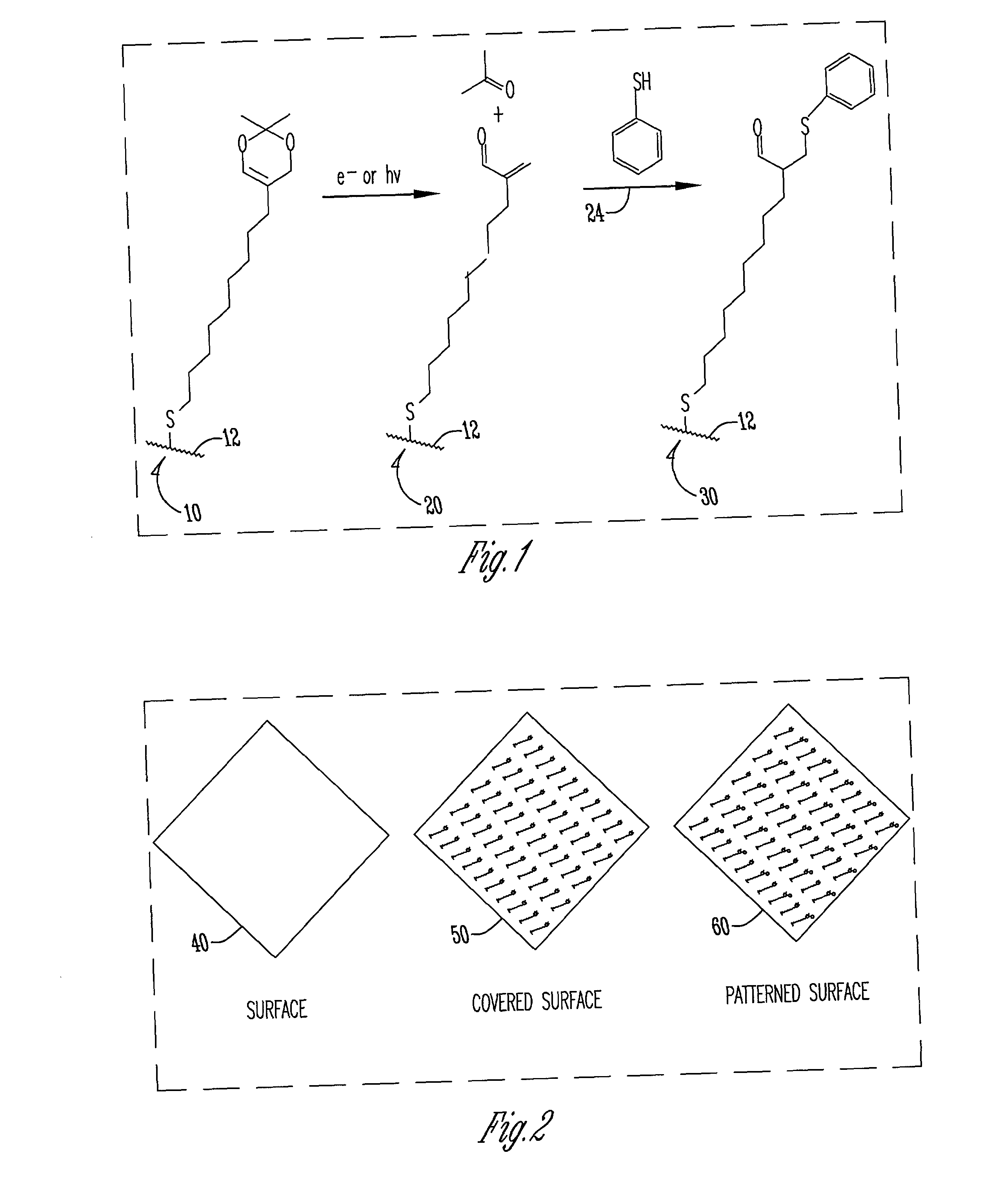Chemical functionalization nanolithography
a functionalization and nanotechnology, applied in the field of nanofabrication, can solve the problem of small nanostructures through chemical processes
- Summary
- Abstract
- Description
- Claims
- Application Information
AI Technical Summary
Benefits of technology
Problems solved by technology
Method used
Image
Examples
Embodiment Construction
:
[0033] The present invention includes methods of patterning surfaces using chemical functionalization. Molecules are used to pattern the chemical functionality of a substrate so that the properties of the substrate can be patterned locally. This localized patterning permits the creation of nanostructures of desired geometries.
[0034] The present invention provides for overlaying or covering a substrate surface with molecules. The molecules can be a bound monolayer, a bound film of greater thickness, a partial monolayer, or a film that only partially covers the substrate. This partial coverage may be selected by the specific chemical interaction between the plurality of molecules and the materials that comprise the substrate. The molecules or a portion of the molecules of the overlayer can also be bound to the surface of the substrate. These bonds can be induced by selective attachment. See A. Hatzor and P. S. Weiss, Science 291, 1019 (2001).
[0035] The present invention provides for ...
PUM
 Login to View More
Login to View More Abstract
Description
Claims
Application Information
 Login to View More
Login to View More - R&D
- Intellectual Property
- Life Sciences
- Materials
- Tech Scout
- Unparalleled Data Quality
- Higher Quality Content
- 60% Fewer Hallucinations
Browse by: Latest US Patents, China's latest patents, Technical Efficacy Thesaurus, Application Domain, Technology Topic, Popular Technical Reports.
© 2025 PatSnap. All rights reserved.Legal|Privacy policy|Modern Slavery Act Transparency Statement|Sitemap|About US| Contact US: help@patsnap.com

